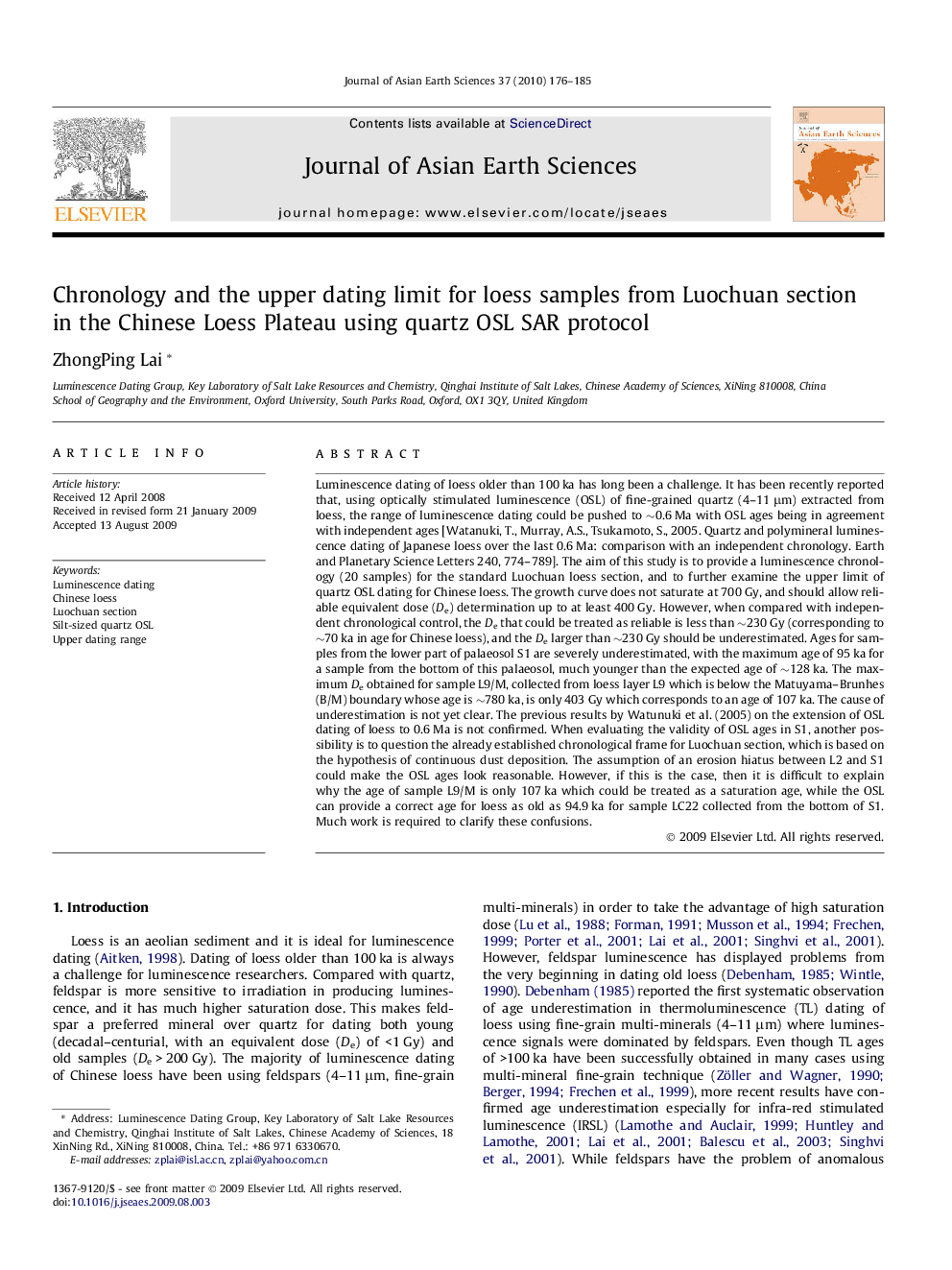| Article ID | Journal | Published Year | Pages | File Type |
|---|---|---|---|---|
| 4732408 | Journal of Asian Earth Sciences | 2010 | 10 Pages |
Luminescence dating of loess older than 100 ka has long been a challenge. It has been recently reported that, using optically stimulated luminescence (OSL) of fine-grained quartz (4–11 μm) extracted from loess, the range of luminescence dating could be pushed to ∼0.6 Ma with OSL ages being in agreement with independent ages [Watanuki, T., Murray, A.S., Tsukamoto, S., 2005. Quartz and polymineral luminescence dating of Japanese loess over the last 0.6 Ma: comparison with an independent chronology. Earth and Planetary Science Letters 240, 774–789]. The aim of this study is to provide a luminescence chronology (20 samples) for the standard Luochuan loess section, and to further examine the upper limit of quartz OSL dating for Chinese loess. The growth curve does not saturate at 700 Gy, and should allow reliable equivalent dose (De) determination up to at least 400 Gy. However, when compared with independent chronological control, the De that could be treated as reliable is less than ∼230 Gy (corresponding to ∼70 ka in age for Chinese loess), and the De larger than ∼230 Gy should be underestimated. Ages for samples from the lower part of palaeosol S1 are severely underestimated, with the maximum age of 95 ka for a sample from the bottom of this palaeosol, much younger than the expected age of ∼128 ka. The maximum De obtained for sample L9/M, collected from loess layer L9 which is below the Matuyama–Brunhes (B/M) boundary whose age is ∼780 ka, is only 403 Gy which corresponds to an age of 107 ka. The cause of underestimation is not yet clear. The previous results by Watunuki et al. (2005) on the extension of OSL dating of loess to 0.6 Ma is not confirmed. When evaluating the validity of OSL ages in S1, another possibility is to question the already established chronological frame for Luochuan section, which is based on the hypothesis of continuous dust deposition. The assumption of an erosion hiatus between L2 and S1 could make the OSL ages look reasonable. However, if this is the case, then it is difficult to explain why the age of sample L9/M is only 107 ka which could be treated as a saturation age, while the OSL can provide a correct age for loess as old as 94.9 ka for sample LC22 collected from the bottom of S1. Much work is required to clarify these confusions.
